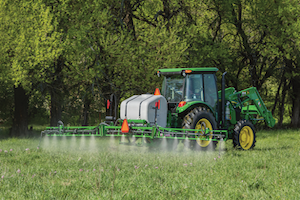Kansas State University’s weed management specialist Sarah Lancaster has offered insight into how producers can control weeds in the coming months, even amid herbicide shortages. Alternative management strategies will become critical if the herbicide shortage continues into 2022.
“Producers have got some tough decisions to make this winter as they think about how they’re going to manage things coming into the spring,” Lancaster said.
Shortages of glyphosate and glufosinate, in particular, are expected to continue into the new year. Lancaster added that she has spoken with distributors who fear the issues may spill into 2023. That said, this situation will likely serve as a valuable test run for producers who may have to learn how to make do without the products if herbicide resistance grows.
“As we think about ways to take the pressure off the post-emergence products, having a solid pre-emergence herbicide program is important,” Lancaster added. “That includes multiple effective modes of action, especially for things like pigweeds, but also for other weeds that have kind of slipped through the cracks the last few years.”
Lancaster also highlighted the importance of optimizing planting dates, seeding rates, seeding depth, and fertility to gain an edge over weeds. Non-chemical weed management options, such as weed electrocution, should also be considered by producers. In the meantime, Lancaster notes that producers can help themselves by ensuring their existing supply of herbicides is applied effectively.
